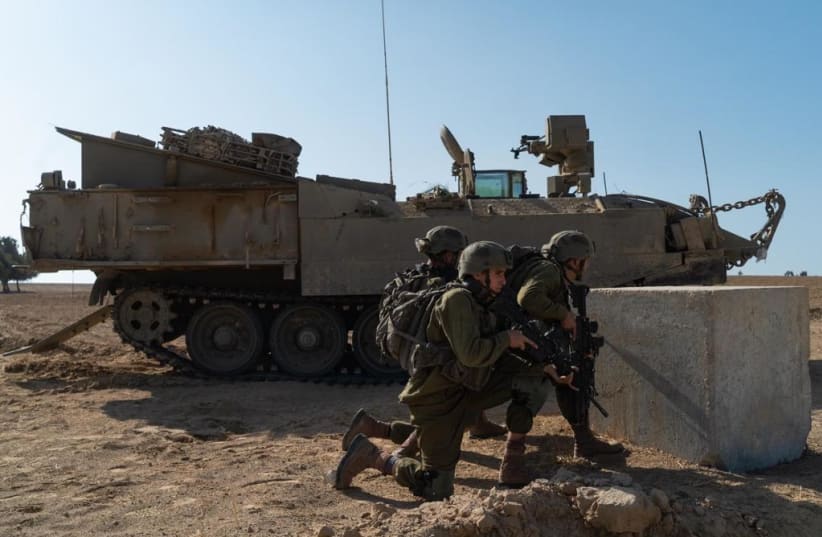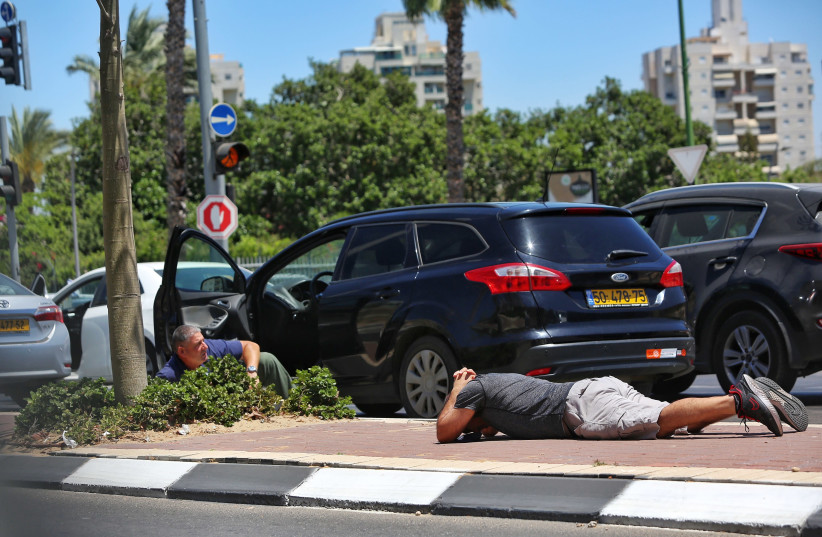Israel’s Home Front Command and National Emergency Authority (RAHEL) is holding a week-long drill that started on Sunday simulating a large-scale war in which civilians are evacuated from northern border communities and security agencies will deal with massive rocket barrages sent by Hezbollah.
The drill is taking lessons that have been learned from past events in the North, as well as those from the May fighting between Israel and terror groups in the Gaza Strip – Operation Guardian of the Walls – and from the Second Lebanon War in 2006.
Following the May fighting, the Home Front Command “carried out a very significant learning process with a lot of research, and this exercise is going to test what we’ve learned,” said Home Front Command Chief of Staff Brig.-Gen. Itzik Bar.
Israel Police and Magen David Adom are also participating in the drill, which ends Thursday, and will see all security and various governmental bodies take part.
“This exercise is also a great opportunity for all government ministries to understand the implications, starting with disruptions in the energy sector – we are talking about 24-hour power outages across the country, 72 hours in localized communities – and other such aspects in terms of continual functioning,” Bar said.
According to RAHEL head Yoram Laredo, the drill is the first time that it is working together with the Home Front Command, and it will sharpen the abilities of the two to work hand-in-hand.
The drill will focus on a new alert system for residents of northern Israel, as well as the rate of fire and the ability of Hezbollah to fire precision missiles and massive barrages toward specific areas – especially communities near the border fence.
According to Bar, some of the issues that concern him are “the issue of precision-guided munitions and the effect that they will have on our ability to function and on things in the world of incoming fire alerts. The second is the rate of fire and Hezbollah’s ability to conduct truly massive rocket barrages at specific geographic areas – I’ll use the phrase ‘demolishing the front line’ – directed fire at the communities near the border.”
On Wednesday, warning sirens with a new alert time and the unit’s emergency application will also be tested.
LOCALITIES IN which the sirens have changed from “immediate” to “15 seconds” are the communities of Ga’aton, Yehiam and Evron in the Mateh Asher Regional Council; the Golan communities of Geshur, Neot Golan, Yoav-Bnei Yehuda, Mevo Hama and the IDF’s Kela base; in the Jordan Valley, the communities of Ma’agan, Golan Heights, Maasade, Kinneret College and Tel Katzir have been extended from 15 seconds to 30 seconds.
Due to the large number of projectiles expected to be fired toward border communities and the continued lack of adequate bomb shelters, the drill will also focus on joint evacuation of residents of communities that are within five km. of the Lebanese border and their absorption into other locations in Israel.
A continuous stay inside bomb shelters due to an extended length of rocket fire will be drilled by the Home Front Command’s Civil Aid logistics battalion, whose function is to support civilians who are staying for prolonged periods inside protected areas with resources and other supplies.
According to a 2020 State Comptroller report, millions of Israelis do not have basic protection means near their homes, and plans for population evacuation, should a war break out, have yet to be completed.
The report stated that some public and shared private shelters in communities along the border are expected to be overcrowded during times of emergencies “that may not allow for prolonged stays.”
According to Bar, both rocket and cyberattacks will be drilled as they can “create serious disruptions.”
The drill will also work on the ability of hospitals to handle a large number of wounded soldiers needing urgent care, as well as the moving of patients toward hospitals in the center of the country in order to provide optimal care.
A scenario simulating a missile strike on an industrial plant containing hazardous materials will also be drilled at the Milotel factory in Nahariya’s Leiman industrial zone. In the exercise, a container holding the hazardous material is struck and forces have to contain the leak and provide care to the injured. As such, troops will enter the factory wearing protective suits to deal with the leak and ambulances will evacuate the wounded from the scene.
HEZBOLLAH SECRETARY-General Hassan Nasrallah has threatened to hit Haifa’s ammonia plants and other similar factories in the past, and a 2020 State Comptroller report revealed shortcomings regarding the protection of vital infrastructure and facilities by defense establishment bodies responsible for their protection.
But according to Bar, factories in northern Israel that have hazardous materials “are more protected than ever before and every year they get better.”
In addition to missile strikes on toxic facilities, the exercise will also have a simulation of the enemy using sedating substances on Israel.
“Some aspects that we will be simulating in the exercise: the enemy’s use of disorienting and sedating substances. We will check this out during the exercise, particularly the ability to identify them, with an emphasis on giving clear, focused, life-saving instructions to the civilian population,” Laredo said.
The drill will also see security services including the police contend with domestic strife inside Israel, like what occurred during the 11-day war in May when riots broke out in mixed Jewish-Arab cities.
“The first day of the exercise will be devoted to the Israel Police, to simulate nationalistic-based riots on many fronts. This will be a day in which the Israel Police can clarify what are the challenges facing it in order to better prepare,” Laredo said.
Formed in 1992 after the first Gulf War, the Home Front Command is in charge of civil defense and is responsible for readying the country in case of conflict or disaster – be it natural or man-made.
In July, Laredo told the Knesset Foreign Affairs and Defense Committee that the organization was “currently undergoing restructuring, both in terms of focusing its mission and roles, and in terms of creating a suitable organizational structure.”
According to the head of RAHEL, following the 2018 Mizrahi Committee, the Home Front Command was defined as the major operative body responsible for the local-authority level and governmental-district level, while RAHEL was in charge of the strategic level and for guiding the government ministries in overall preparation for emergencies.
The recommendations of the Mizrahi Committee will be examined as part of the drill.
The Home Front Command was criticized for its response during the 2006 war with Hezbollah, in which more than 160 Israelis were killed. Since then, it has strengthened its units, and its liaison units are active in hundreds of municipalities across the country.
The command is responsible for advising the public of any rockets that have been fired by Israel’s enemies and alerting citizens about incoming rocket attacks using sirens and push notifications from their app.
Should a war break out with Hezbollah, tens of thousands of rockets are expected to be fired from Lebanon, with some 2,000 fired toward Israel each day.


